Unlocking Developer Productivity: Orchestrate Workflows with Built-in System Tasks
This is Part 1 of the series on System Tasks. Check out Part 2, which dives into all the use cases and implementation details for Conductor’s most popular system tasks. Orchestration is a powerful design framework for coordinating distributed services and systems into automated processes. Using a workflow engine, such as Orkes Conductor, provides a myriad of benefits like durable executions, state tracking, and developer productivity. Orchestration-driven development can slash time-to-launch into half, especially when combined with built-in, reusable tasks for common cases, like calling an LLM, publishing events to a message broker, or even just calling an HTTP endpoint. Let’s dive deeper into Orkes Conductor’s system tasks and what makes them so powerful in unlocking developer productivity. What is a workflow engine? A workflow engine orchestrates complex processes by defining tasks in a declarative format (such as JSON). Unlike traditional in-code approaches, where developers handle retries, logging, and error management, workflow engines like Orkes Conductor automate task execution, abstracting these concerns. Conductor abstracts away error management and plumbing code, making it effortless to build durable, stateful applications. How to write workflows using system tasks? Check out our code implementation guide. A workflow engine decouples execution code from business logic. This yields two time-saving advantages: one, the business logic of tasks and workflows are now reusable, scalable, and more easily maintainable. Two, developers can focus on task dependencies without having to worry about resilience and execution guarantees, which are managed by the engine. Clear separation of concerns: the workflow engine handles execution, error management, and state tracking; while the business logic resides in the tasks. Interested to learn more about how Conductor works under the hood? Check out the in-depth blog on durable execution. Over time, common patterns emerge across applications, like data transformation, lwebhook integrations, and HTTP calls. This is where system tasks come in to automate business logic into reusable components, further speeding up development time for common use cases. What are system tasks? System tasks in Orkes Conductor represent reusable business logic components that combine to form orchestration patterns. These tasks run within the engine, allowing developers to quickly build complex workflows without reinventing the wheel, leading to a flexible, maintainable automation process. All system tasks in Orkes Conductor. When building workflows in Orkes Conductor, system tasks are your go-to tools for getting things done—fast. These are built-in, ready-to-use tasks that handle common operations like making HTTP calls, waiting for external events, or even running AI tasks一all without the need to write custom worker tasks. Since they run within Conductor’s JVM, system tasks help streamline development and remove the overhead of managing the custom infrastructure. System tasks vs worker tasks in Conductor. Why use system tasks? System tasks bring clarity and consistency to workflows. Their standardized structure makes it easy to share, read, and reason about workflows across teams一no guesswork, no surprises. They also make complex operations easier to express, with less boilerplate. Since Conductor handles the execution, you get enterprise-grade resilience without lifting a single finger. With Conductor’s built-in monitoring and debugging tools, it’s easier to track failures, inspect state, and keep things running smoothly. Benefits System tasks offer a declarative, reliable way to build workflows. By abstracting common logic into reusable components, they reduce development effort, enhance clarity, and ensure consistent behavior—making them ideal for predictable, maintainable workflow design. Time to Market: Eliminate the need for custom code, accelerating development for tasks like HTTP calls, database updates, and event handling. Standardization: Offer consistency across workflows, making them easier to understand than custom worker task implementations. Scalability: Workflows using system tasks are inherently easier to scale, since execution is managed by Orkes Conductor itself. What about custom business logic? Conductor offers all the benefits of workflow orchestration, even for custom business logic. This can be done through two approaches: Inline tasks and Worker tasks. Inline tasks let you execute lightweight JavaScript code directly within the workflow without the need for external workers. For more complex tasks, you can deploy custom worker tasks. Worker tasks provide full flexibility to implement advanced logic, such as API calls and long-running operations, while still benefiting from Conductor’s automated retries, status updates, and monitoring. Inline task approach An Inli
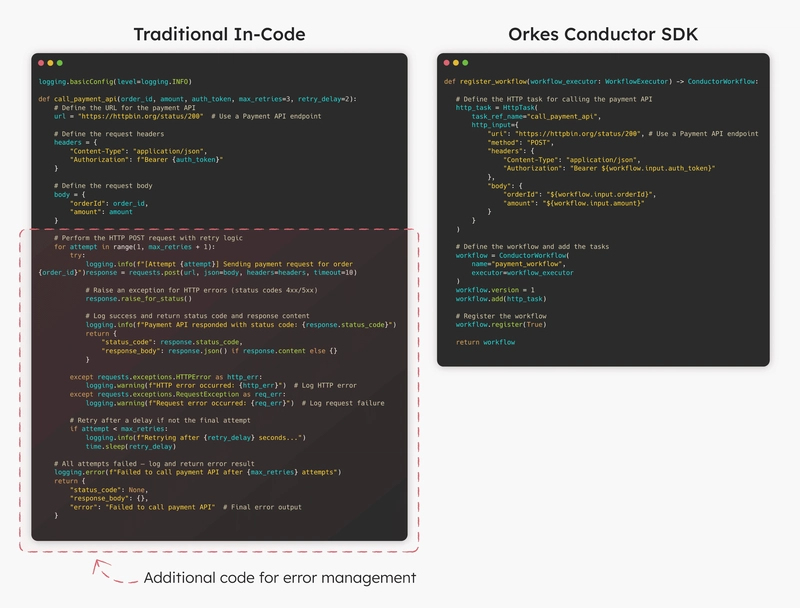
This is Part 1 of the series on System Tasks. Check out Part 2, which dives into all the use cases and implementation details for Conductor’s most popular system tasks.
Orchestration is a powerful design framework for coordinating distributed services and systems into automated processes. Using a workflow engine, such as Orkes Conductor, provides a myriad of benefits like durable executions, state tracking, and developer productivity.
Orchestration-driven development can slash time-to-launch into half, especially when combined with built-in, reusable tasks for common cases, like calling an LLM, publishing events to a message broker, or even just calling an HTTP endpoint. Let’s dive deeper into Orkes Conductor’s system tasks and what makes them so powerful in unlocking developer productivity.
What is a workflow engine?
A workflow engine orchestrates complex processes by defining tasks in a declarative format (such as JSON). Unlike traditional in-code approaches, where developers handle retries, logging, and error management, workflow engines like Orkes Conductor automate task execution, abstracting these concerns.
 Conductor abstracts away error management and plumbing code, making it effortless to build durable, stateful applications.
Conductor abstracts away error management and plumbing code, making it effortless to build durable, stateful applications.
How to write workflows using system tasks? Check out our code implementation guide.
A workflow engine decouples execution code from business logic. This yields two time-saving advantages: one, the business logic of tasks and workflows are now reusable, scalable, and more easily maintainable. Two, developers can focus on task dependencies without having to worry about resilience and execution guarantees, which are managed by the engine.
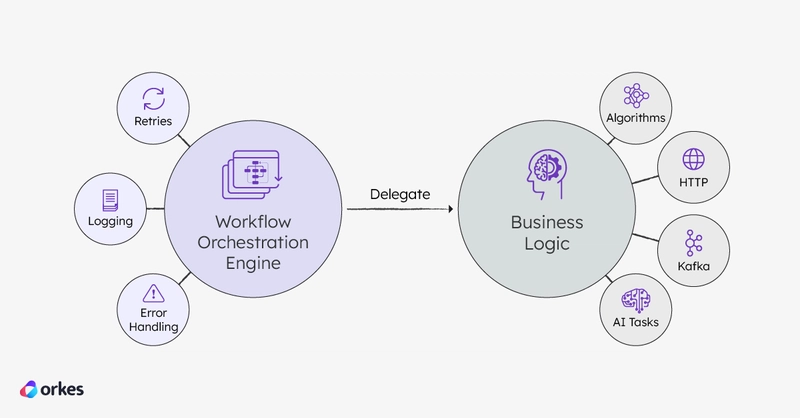 Clear separation of concerns: the workflow engine handles execution, error management, and state tracking; while the business logic resides in the tasks.
Clear separation of concerns: the workflow engine handles execution, error management, and state tracking; while the business logic resides in the tasks.
Interested to learn more about how Conductor works under the hood? Check out the in-depth blog on durable execution.
Over time, common patterns emerge across applications, like data transformation, lwebhook integrations, and HTTP calls. This is where system tasks come in to automate business logic into reusable components, further speeding up development time for common use cases.
What are system tasks?
System tasks in Orkes Conductor represent reusable business logic components that combine to form orchestration patterns. These tasks run within the engine, allowing developers to quickly build complex workflows without reinventing the wheel, leading to a flexible, maintainable automation process.
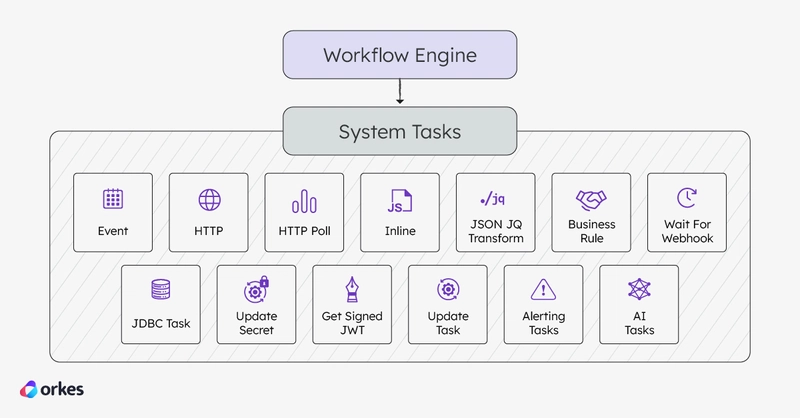 All system tasks in Orkes Conductor.
All system tasks in Orkes Conductor.
When building workflows in Orkes Conductor, system tasks are your go-to tools for getting things done—fast. These are built-in, ready-to-use tasks that handle common operations like making HTTP calls, waiting for external events, or even running AI tasks一all without the need to write custom worker tasks. Since they run within Conductor’s JVM, system tasks help streamline development and remove the overhead of managing the custom infrastructure.
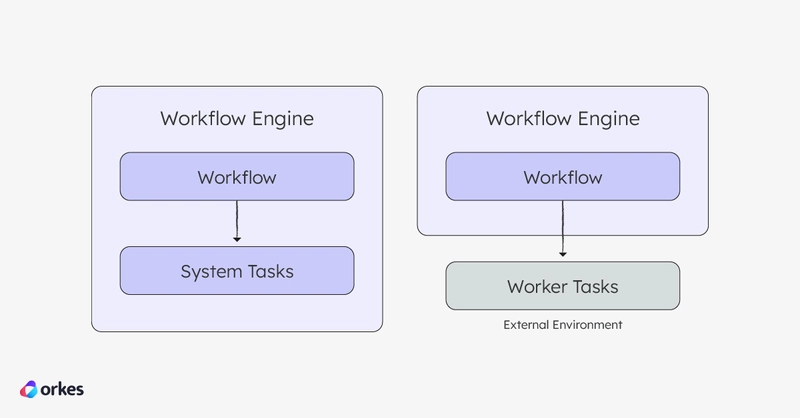 System tasks vs worker tasks in Conductor.
System tasks vs worker tasks in Conductor.
Why use system tasks?
System tasks bring clarity and consistency to workflows. Their standardized structure makes it easy to share, read, and reason about workflows across teams一no guesswork, no surprises.
They also make complex operations easier to express, with less boilerplate. Since Conductor handles the execution, you get enterprise-grade resilience without lifting a single finger. With Conductor’s built-in monitoring and debugging tools, it’s easier to track failures, inspect state, and keep things running smoothly.
Benefits
System tasks offer a declarative, reliable way to build workflows. By abstracting common logic into reusable components, they reduce development effort, enhance clarity, and ensure consistent behavior—making them ideal for predictable, maintainable workflow design.
- Time to Market: Eliminate the need for custom code, accelerating development for tasks like HTTP calls, database updates, and event handling.
- Standardization: Offer consistency across workflows, making them easier to understand than custom worker task implementations.
- Scalability: Workflows using system tasks are inherently easier to scale, since execution is managed by Orkes Conductor itself.
What about custom business logic?
Conductor offers all the benefits of workflow orchestration, even for custom business logic. This can be done through two approaches: Inline tasks and Worker tasks.
Inline tasks let you execute lightweight JavaScript code directly within the workflow without the need for external workers. For more complex tasks, you can deploy custom worker tasks. Worker tasks provide full flexibility to implement advanced logic, such as API calls and long-running operations, while still benefiting from Conductor’s automated retries, status updates, and monitoring.
Inline task approach
An Inline task is a type of system task that allows you to execute custom JavaScript code directly within the workflow. It’s ideal for lightweight operations like simple data transformations, conditional checks, or small calculations. Inline tasks are executed within the Conductor JVM, which means they benefit from low latency, no network overhead, and easier debugging.
Find out how to use Inline tasks in Part Two of this blog series.
Key Features:
- Executes directly within the Conductor JVM.
- Best for lightweight logic and transformations.
- No network calls or external dependencies.
- Easier to implement and debug but limited to JavaScript.
Worker task approach
A Worker task (also known as Simple task) is an external custom function or service that performs a specific task in a workflow. Written in any language of choice (Python, Java, etc.), it can execute complex business logic, custom algorithms, or long-running operations. Worker tasks run outside the Conductor server, meaning they require additional infrastructure set-up and logging mechanisms.
Key Features:
- External execution (outside the Conductor JVM).
- Full flexibility to implement complex logic.
- Requires task-level logging within the worker code.
- Typically involves network calls (e.g., HTTP requests).
System tasks vs Worker tasks
Both system tasks and Worker tasks offer different advantages, and the choice to use one over the other depends on your requirements. Here’s a comparison between the two.
| System tasks | Worker tasks | |
|---|---|---|
| Advantages |
|
|
| Trade-offs |
|
|
Wrap up
Orkes Conductor is a workflow engine that offers the best of both worlds: low-code agility when you need to build out common use cases, and full customization control when you need to dive deep into building unique solutions. It’s a development platform made to empower developers in a fast-paced world. In Part Two of this blog series, discover how to use system tasks in Conductor, as we spill the full implementation details.
Orkes Conductor is an enterprise-grade Unified Application Platform for process automation, API and microservices orchestration, agentic workflows, and more. Check out the full set of features, or try it yourself using our free Developer Playground.




























![[Webinar] AI Is Already Inside Your SaaS Stack — Learn How to Prevent the Next Silent Breach](https://blogger.googleusercontent.com/img/b/R29vZ2xl/AVvXsEiOWn65wd33dg2uO99NrtKbpYLfcepwOLidQDMls0HXKlA91k6HURluRA4WXgJRAZldEe1VReMQZyyYt1PgnoAn5JPpILsWlXIzmrBSs_TBoyPwO7hZrWouBg2-O3mdeoeSGY-l9_bsZB7vbpKjTSvG93zNytjxgTaMPqo9iq9Z5pGa05CJOs9uXpwHFT4/s1600/ai-cyber.jpg?#)














































































































































![[The AI Show Episode 144]: ChatGPT’s New Memory, Shopify CEO’s Leaked “AI First” Memo, Google Cloud Next Releases, o3 and o4-mini Coming Soon & Llama 4’s Rocky Launch](https://www.marketingaiinstitute.com/hubfs/ep%20144%20cover.png)

















































































































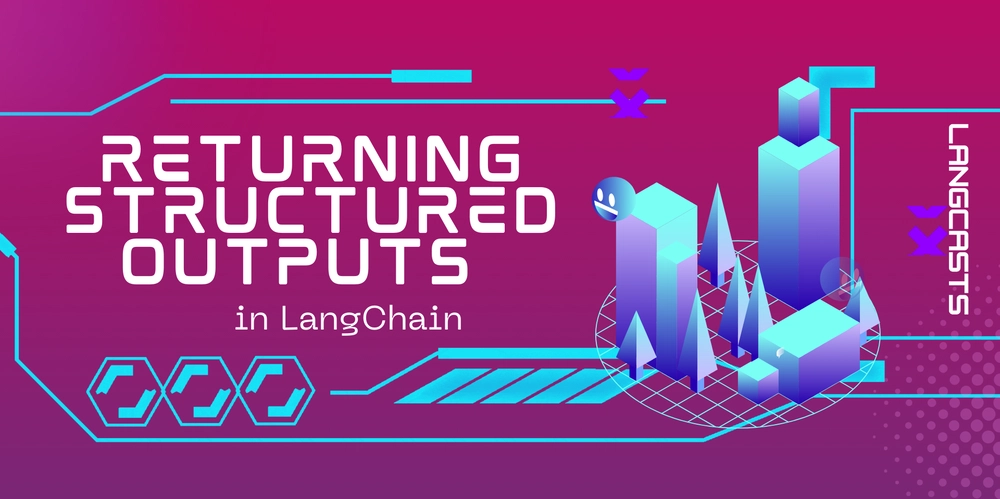



















































































![Rogue Company Elite tier list of best characters [April 2025]](https://media.pocketgamer.com/artwork/na-33136-1657102075/rogue-company-ios-android-tier-cover.jpg?#)







































































_Andreas_Prott_Alamy.jpg?width=1280&auto=webp&quality=80&disable=upscale#)





































































































![Apple Watch Series 10 Back On Sale for $299! [Lowest Price Ever]](https://www.iclarified.com/images/news/96657/96657/96657-640.jpg)
![EU Postpones Apple App Store Fines Amid Tariff Negotiations [Report]](https://www.iclarified.com/images/news/97068/97068/97068-640.jpg)
![Apple Slips to Fifth in China's Smartphone Market with 9% Decline [Report]](https://www.iclarified.com/images/news/97065/97065/97065-640.jpg)



































































































































